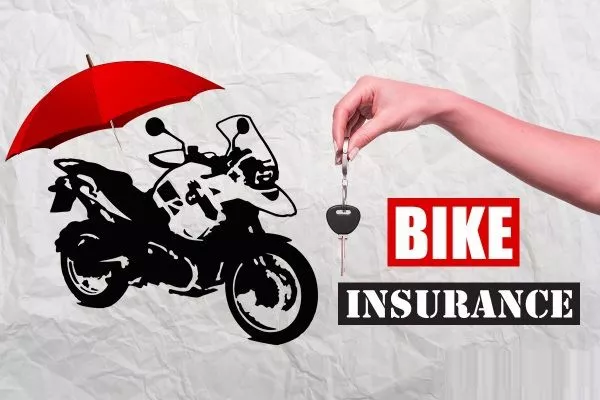When it comes to protecting your valuable two-wheeler on the road, insurance is a critical aspect. In the realm of bike insurance, two primary options stand out: comprehensive and third-party insurance. Both types offer distinct coverage benefits, and understanding the differences between them is crucial for making an informed decision. This article aims to dissect the disparities between comprehensive and third-party bike insurance, aiding readers in selecting the most suitable option for their needs.
Definition and Scope
Comprehensive bike insurance, as the name suggests, provides extensive coverage for various risks associated with owning and operating a motorcycle. It typically encompasses protection against third-party liability as well as damage to the insured vehicle due to accidents, theft, natural calamities, and other unforeseen events. In contrast, third-party bike insurance is designed primarily to cover damages and liabilities arising from accidents involving third parties, including injury or property damage caused by the insured motorcycle.
Coverage Comparison
One of the most significant distinctions between comprehensive and third-party bike insurance lies in their coverage scope. Comprehensive insurance offers a broader range of protections, including coverage for both the insured vehicle and third parties. This means that in addition to compensating third parties for damages, comprehensive insurance also covers repair or replacement costs for the insured bike due to various perils, such as accidents, theft, vandalism, fire, or natural disasters like floods or earthquakes.
On the other hand, third-party bike insurance has a more limited scope, focusing primarily on covering liabilities towards third parties. This includes compensation for bodily injuries, death, or property damage caused by the insured motorcycle to other people or their properties. However, third-party insurance does not provide any coverage for damages to the insured bike itself, leaving the owner responsible for repair or replacement costs resulting from accidents or other perils.
Financial Protection
Another crucial aspect to consider when comparing comprehensive and third-party bike insurance is the level of financial protection they offer. Comprehensive insurance provides comprehensive financial coverage, safeguarding the insured bike against a wide array of risks. This can be particularly beneficial for motorcycle owners who want peace of mind knowing that their investment is adequately protected from various potential threats, ranging from minor accidents to major disasters.
In contrast, while third-party insurance offers essential financial protection by covering liabilities towards third parties, it may leave the insured bike owner vulnerable to significant financial losses in case of accidents or damages to the vehicle itself. Without comprehensive coverage, motorcycle owners may have to bear the entire financial burden of repairing or replacing their bikes, which can be substantial depending on the extent of the damages or the value of the motorcycle.
Legal Compliance
Both comprehensive and third-party bike insurance fulfill legal requirements mandated by authorities in many jurisdictions. However, the level of compliance and adequacy of coverage may vary between the two types of insurance. In most regions, third-party insurance is the minimum legal requirement for motorcycle owners to operate their vehicles on public roads. This is because third-party insurance ensures that victims of accidents involving the insured motorcycle receive compensation for their losses, thereby fulfilling the principle of financial responsibility.
While comprehensive insurance exceeds the minimum legal requirements by offering additional protections for the insured vehicle, it is not always mandatory by law. Nonetheless, opting for comprehensive coverage can provide motorcycle owners with greater peace of mind and financial security, knowing that they are adequately protected against a broader range of risks on the road.
Cost Considerations
Cost is a significant factor that influences the choice between comprehensive and third-party bike insurance. Generally, comprehensive insurance tends to be more expensive than third-party insurance due to the broader scope of coverage it offers. The premium for comprehensive coverage takes into account factors such as the value of the insured bike, its model, make, age, and the risk profile of the policyholder, among other variables.
In contrast, third-party insurance premiums are typically lower since they only cover liabilities towards third parties and do not include protections for the insured motorcycle itself. This makes third-party insurance a more affordable option for motorcycle owners who prioritize minimizing insurance costs while still fulfilling legal requirements.
Additional Benefits
In addition to the core coverage components, comprehensive bike insurance often comes with various additional benefits and optional add-ons that policyholders can choose to enhance their coverage further. These may include features like roadside assistance, personal accident cover, coverage for accessories and modifications, zero depreciation cover, and more. These additional benefits can provide added convenience, protection, and financial security to motorcycle owners, making comprehensive insurance a more attractive option for those seeking comprehensive protection for their prized possessions.
Conclusion
In conclusion, the choice between comprehensive and third-party bike insurance hinges on various factors, including coverage needs, financial considerations, legal requirements, and personal preferences. While comprehensive insurance offers extensive protection for both the insured bike and third parties, it comes at a higher cost. Third-party insurance, on the other hand, provides basic coverage for liabilities towards third parties at a more affordable price point.
Ultimately, motorcycle owners should carefully assess their insurance needs and weigh the pros and cons of each type of coverage before making a decision. By understanding the differences between comprehensive and third-party bike insurance, individuals can make informed choices that align with their priorities and provide the necessary protection for their two-wheelers on the road.


